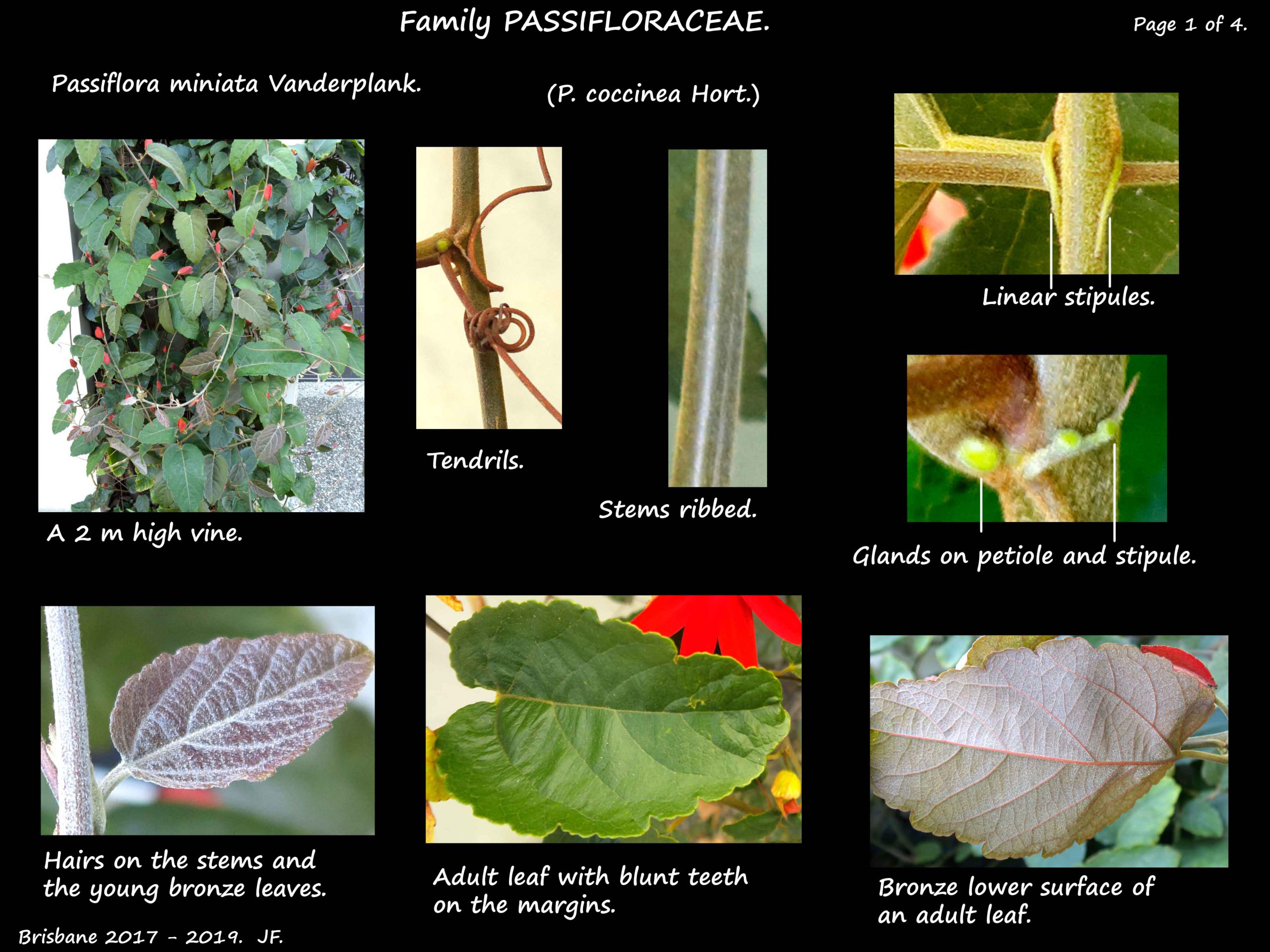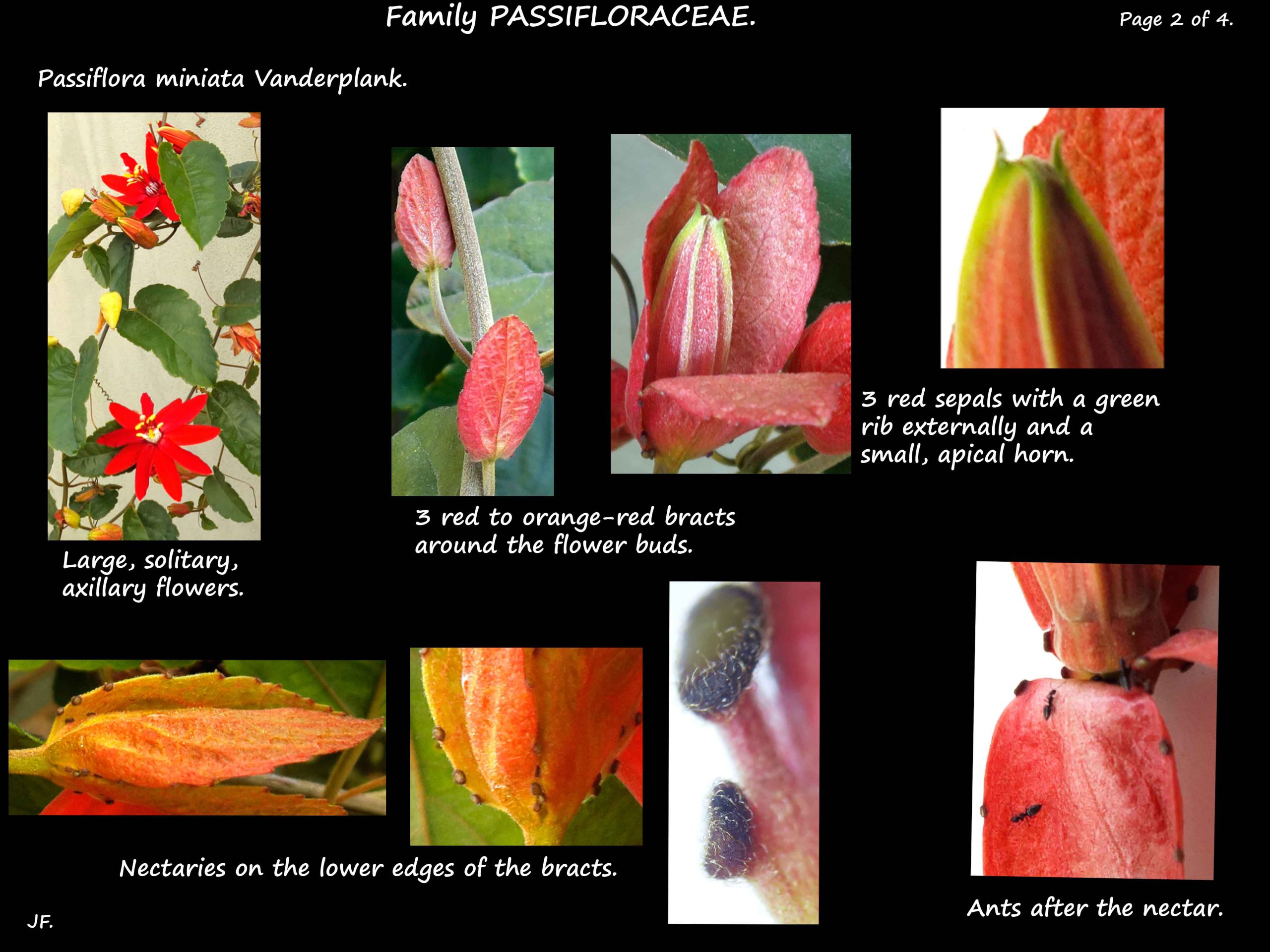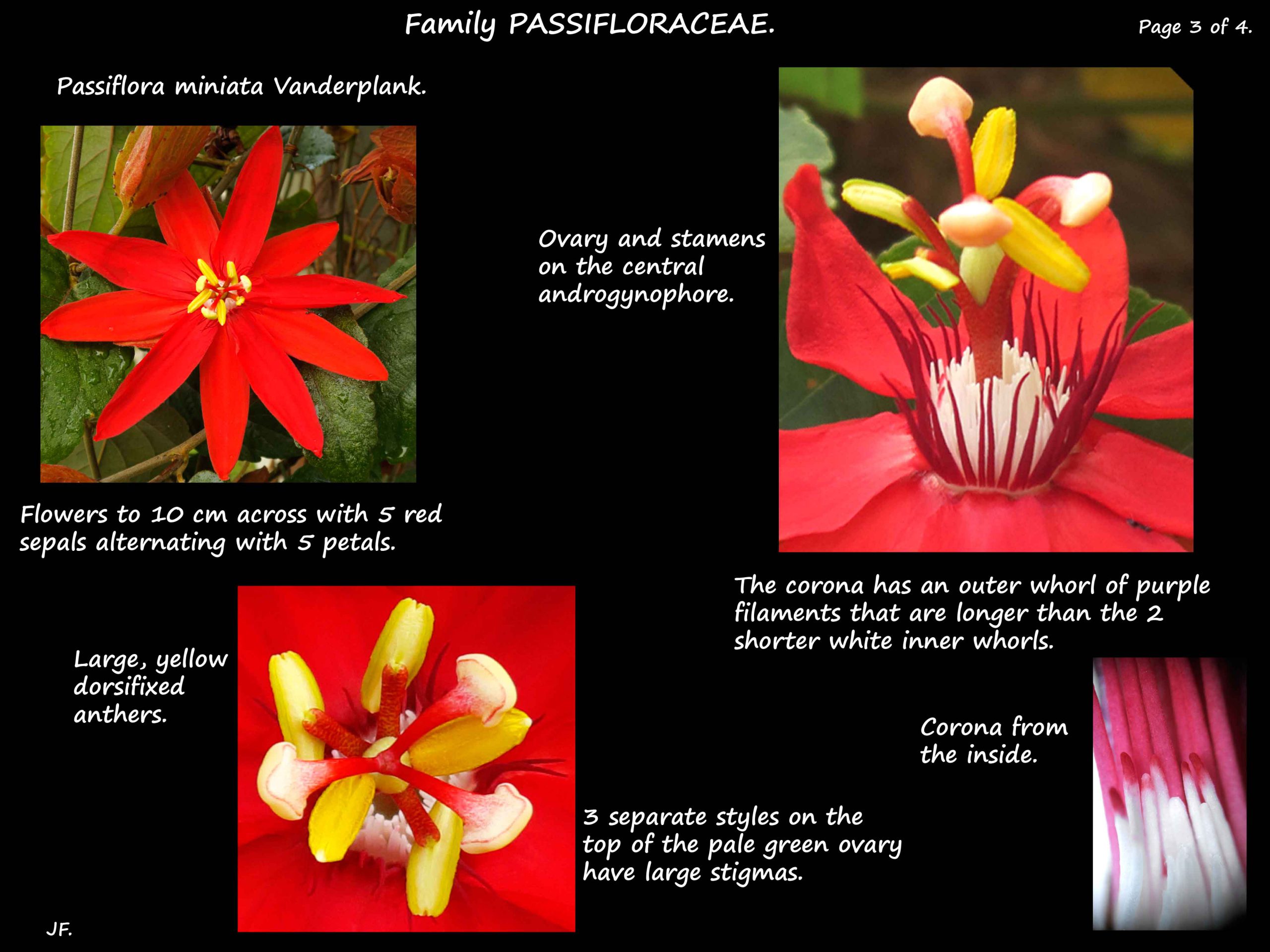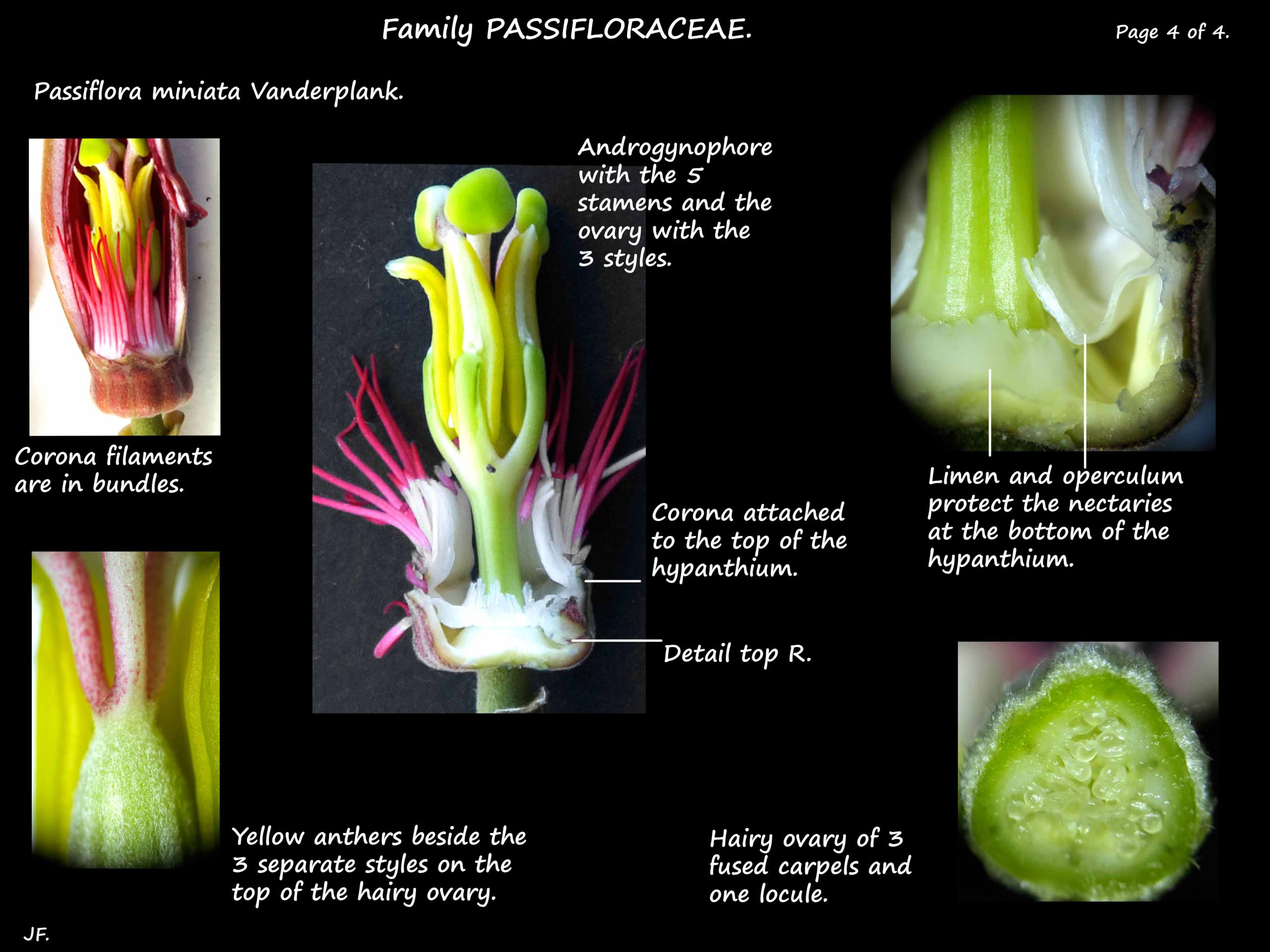Passiflora miniata Vanderpl. (Vanderplank).
Family Passifloraceae.
For a long time all cultivated red flowered passionfruit were sold as Passiflora coccinea.
In 2006 it was noted that most were not P. coccinea and were named Passiflora miniata Vanderplank.
So well known as P. coccinea they are seen in the horticultural trade as Passiflora coccinea hort.
The Red or Scarlet Passion flower is a common garden plant in S. E. Queensland.
It is becoming an invasive weed in some places.
It is a climber using unbranched axillary tendrils or a creeper with suckers.
Stems, up to 6 m long, have alternately arranged leaves.
The unlobed oval blades have blunt teeth on the edges.
Inflorescences are solitary, axillary, bright red flowers with reddish bracts.
Flowers are up to 10 cm across with 5 reflexed sepals and 5 red petals.
The corona has 3 whorls of filaments.
Those in the outer whorl are purple and curved outwards slightly.
The 2 inner whorls are erect, white and shorter.
The central androgynophore is pale with reddish spots especially towards the top.
At the top is the yellowish ovary with 3 red styles that have large yellow stigmas.
Just below the ovary are the 5 stamens with spotted red filaments and yellow anthers.
The anthers open via longitudinal slits.
The drooping, almost round, yellow and green fruit, up to 5 cm across have numerous seeds.
(The true P. coccinea has 2 series of white or pale pink corona filaments and erect pear-shaped fruit.)
J.F.





